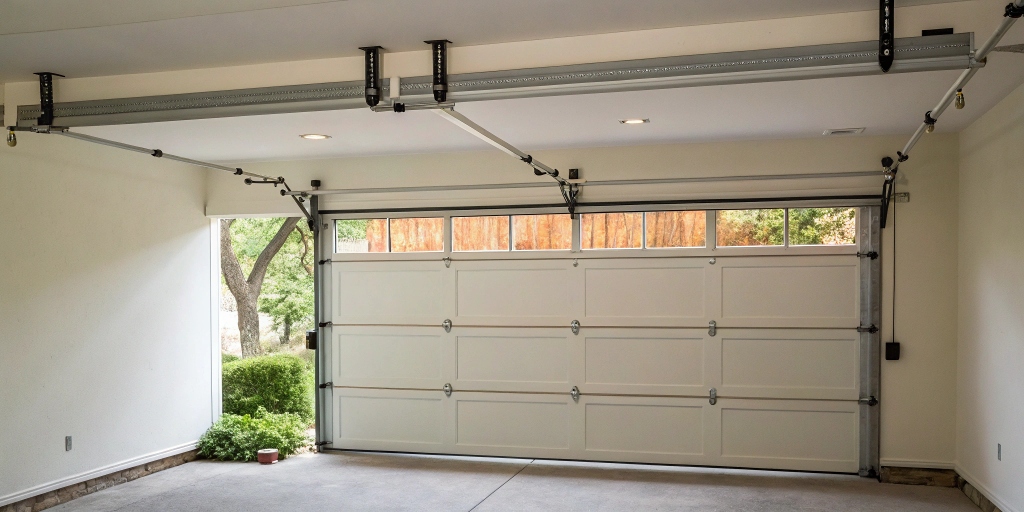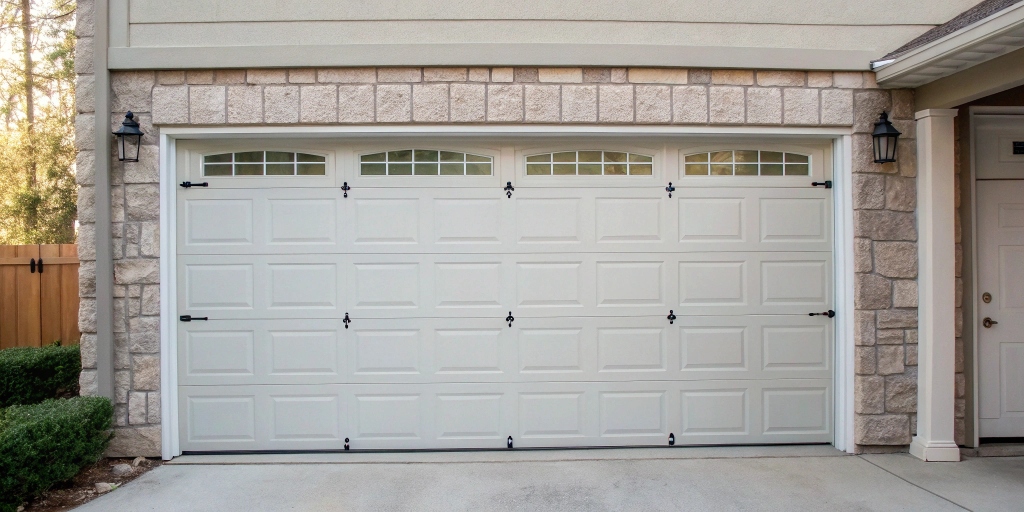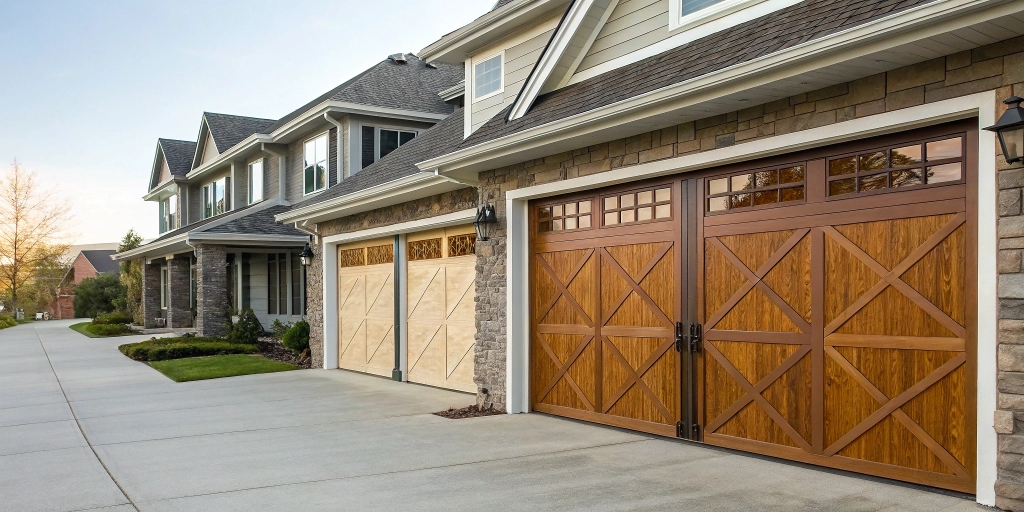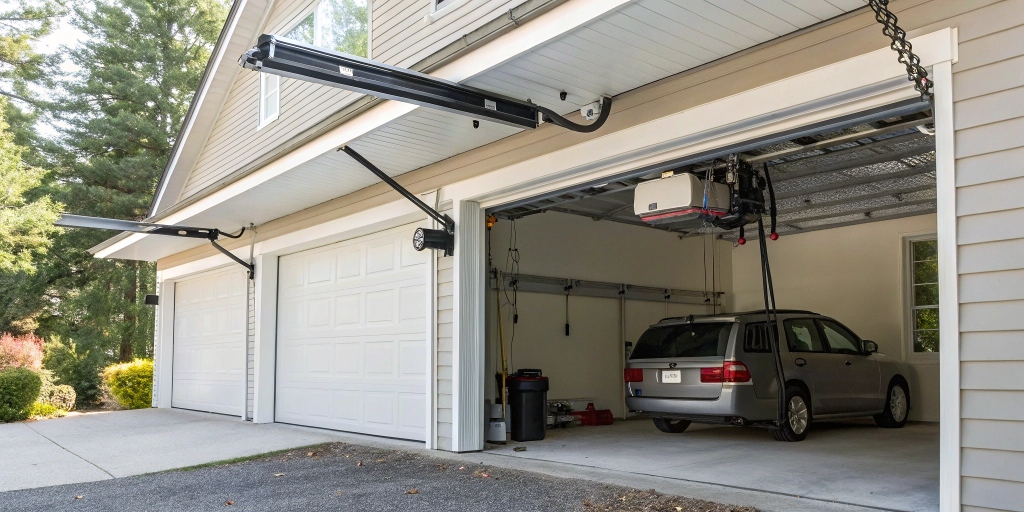Imagine pulling into your driveway after a long day, only to discover your brand-new garage door won’t open fully because the ceiling is too low. It’s a frustrating scenario that countless homeowners face, often leading to costly rework and delays. But with the right knowledge about garage door headroom, you can avoid these pitfalls entirely. Whether you’re planning a new installation, upgrading an existing setup, or dealing with a low-ceiling garage door, understanding minimum clearance requirements is key to a smooth, efficient system. In this comprehensive guide, we’ll dive into everything from basic measurements to advanced low headroom solutions, helping you make informed decisions that save time and money.
Garage doors aren’t just about aesthetics or security—they’re mechanical systems that require precise space to operate. Factors like the type of track, spring system, and even the garage door opener play into how much overhead room you need. If you’ve ever searched for terms like “garage door clearance height” or “minimum ceiling height for 7′ garage door,” you’re in the right place. We’ll cover standard requirements, low-profile options, and tips to optimize your space, ensuring your setup meets both functional and safety standards.
What Is Garage Door Headroom and Why Does It Matter?
At its core, garage door headroom refers to the vertical space between the top of your garage door opening and the nearest overhead obstruction, such as the ceiling, beams, or ducts. This measurement isn’t just a technical detail; it’s the foundation for how your door tracks, springs, and opener function together. Insufficient headroom can lead to jammed doors, strained hardware, or even safety hazards, like a door that doesn’t close properly.
Why does this matter so much? For starters, garage doors operate on curved tracks that guide the panels upward and backward. The radius of these tracks—typically 10, 12, or 15 inches—directly influences the required clearance. A garage door track radius that’s too tight for your space might force you into expensive modifications. Plus, in homes with odd-sized garage doors or non-standard heights, overlooking headroom can turn a simple upgrade into a major headache.
From an informational standpoint, knowing your garage door’s low headroom options early in the planning phase empowers you to choose the right products. Commercially, it opens doors (pun intended) to specialized items like low clearance garage door openers or tracks designed for tight spaces. According to industry standards, proper headroom ensures longevity—reducing wear on components and minimizing repair costs over time.
How to Accurately Measure Your Garage Door Headroom
Measuring headroom is straightforward but requires attention to detail to avoid errors. Start by grabbing a tape measure, and if your ceiling is high, consider a ladder or laser measurer for precision. Simply extend the tape from the top edge of the door opening (the header) straight up to the lowest point of any obstruction above it.
If climbing isn’t feasible, try an alternative: Measure from the floor to the ceiling or obstruction, then subtract your door’s height. For a standard 7-foot garage door, if your floor-to-ceiling is 8 feet, you’d have roughly 12 inches of headroom— but double-check for accuracy. This method is especially handy for garages with typical height of garage door setups.
Don’t forget to account for all potential blockers. Common obstructions include steel beams that support the structure, drop ceilings in finished garages, piping for plumbing, air ducts from HVAC systems, sound systems wired overhead, sprinkler heads in fire-protected spaces, shelving units, storage racks, lights, and electrical conduits. The key is to identify the nearest one, as even a single protruding item can dictate your entire clearance.
For example, if a light fixture hangs down 6 inches into what would otherwise be 15 inches of space, your effective headroom drops to 9 inches. In such cases, relocating the obstruction or opting for a low-headroom garage door track might be necessary. Always measure multiple points across the width of the opening, as ceilings aren’t always level.
Standard Headroom Requirements for Different Garage Door Types
Understanding minimum requirements starts with your door’s operation type—manual or automatic—and whether it’s residential or commercial.
For most homeowners with torsion spring systems, the basics are:
- Manual operation (hand-lifted): At least 12 inches for residential doors.
- Automatic with a garage door opener: Bump that up to 15 inches to accommodate the opener’s rail and motor.
Commercial setups demand more space due to heavier doors:
- Manual: 15 inches minimum.
- Automatic: 18 inches.
Industrial or rolling steel doors often need 24 to 36 inches, depending on the barrel diameter and track setup. These figures assume standard torsion springs mounted at the front. If space is tighter, rear-mounted springs or extension springs can reduce needs, but they come with trade-offs like less balance or higher maintenance.
The garage door track dimensions also factor in. Residential doors commonly use 2-inch tracks with radii of 10, 12, or 15 inches. Larger 3-inch tracks are for heavier or taller doors. A bigger radius means smoother operation but requires more headroom. For instance, a 15-inch radius track is ideal for doors with taller sections, providing better lift and reducing strain on the opener.
Garage Door Headroom Chart: A Quick Reference
To make things easier, here’s a handy garage door headroom chart based on door height and track radius for torsion spring setups. These are for manual operations; add 2-3 inches for garage door openers.
| Door Height | 2″ Track 10″ Radius | 2″ Track 12″ Radius | 2″ Track 15″ Radius | 3″ Track 15″ Radius |
| Up to 12′ | 10 inches | 12 inches | 15 inches | 15 inches |
| 12’3″-16′ | N/A | 15 inches | 16 inches | 16 inches |
| 16’3″-18′ | N/A | N/A | N/A | 16 inches |
| Over 18′ | N/A | N/A | N/A | 21 inches |
This chart highlights why planning is crucial. For a 7-foot garage door (common in residential settings), a 12-inch radius track needs at least 12 inches of headroom manually. If you’re installing a low-ceiling garage door opener, factor in extra space for the drawbar mechanism, which pulls the door up.
For taller doors, like those over 12 feet, options narrow—sticking to larger radii ensures compatibility. If your measurements fall short, don’t panic; low headroom kits can shave off several inches without compromising function.
Low Headroom Solutions for Challenging Spaces
What if your garage has low overhead? That’s where low-headroom garage door options shine. These specialized systems use double-track designs, allowing the door to curve away from the opening faster. For a 12-inch radius low headroom setup:
- Front-mounted torsion springs (manual): As little as 9 inches.
- With an opener: Around 12 inches.
Low clearance garage door tracks feature top and bottom rollers, flat brackets, and outside hookups, making them perfect for basements, attics converted to garages, or homes with added features like mezzanines. Pair them with a low-headroom garage door opener, such as belt-drive models designed for tight spaces, to maximize efficiency.
For even tighter spots, consider zero clearance garage door opener alternatives, though true zero is rare—most still need 4-6 inches. Low-profile garage door openers mount sideways or use jackshaft mechanisms, eliminating the overhead rail. These are commercial favorites for warehouses, but work well in residential low-ceiling garage door scenarios, too.
Another option: Low-headroom roll-up doors, which coil tightly and require minimal track space. They’re durable for high-traffic areas and can fit in as little as 8 inches for manual ops. If framing a 16-foot garage door in a constrained area, consult pros about custom low-headroom kits, including modified tracks and springs.
Tips for Optimizing Garage Door Clearance
To get the most from your space:
- Plan for Extras: Always add buffer room for future additions like insulation or smart openers.
- Professional Assessment: If dealing with a garage door for low headroom, hire an installer to verify measurements.
- Material Choices: Lighter doors (e.g., aluminum) pair better with low-profile garage doors, reducing strain.
- Maintenance: Regularly check tracks and springs to prevent clearance issues from wear.
- Upgrades: For garages with a minimum ceiling height of 7 garage door challenges, retrofit with low-headroom track garage door kits.
Addressing common queries: The standard height for a garage door is 7 feet, but custom sizes handle odd dimensions. Garage door openers for low ceilings often include features like quiet operation and smart controls.
Frequently Asked Questions About Garage Door Headroom
What’s the minimum ceiling height for a 7 garage door? For standard setups, aim for at least 8 feet total (7-foot door + 12 inches headroom), but low options can drop this.
Can I use a low headroom kit on any door? Most residential doors, yes, but check compatibility with your track and opener.
What’s the difference between a 12″ or a 15-inch radius garage door track? The 15-inch offers smoother curves but needs more space—ideal for heavier doors.
Are there garage doors for low headroom in commercial settings? Absolutely; low-overhead garage door systems with reinforced tracks handle industrial needs.
How do I handle a garage door with low headroom with an existing opener? Upgrade to a low clearance garage door opener or add a conversion kit.
Wrapping Up: Secure Your Garage Door Setup Today
Navigating garage door headroom doesn’t have to be overwhelming. By measuring accurately, understanding requirements, and exploring low headroom solutions, you can ensure a flawless installation that enhances your home’s functionality. Whether it’s a simple residential upgrade or a commercial overhaul, the right clearance makes all the difference in performance and safety.
Ready to tackle your project? Visit Garage Door Guide today to browse low-headroom garage door tracks, openers, and kits tailored to your needs. Contact our experts for a free consultation, or shop our selection of high-quality components. Don’t let limited space hold you back—get started now and transform your garage!
Find out more:





